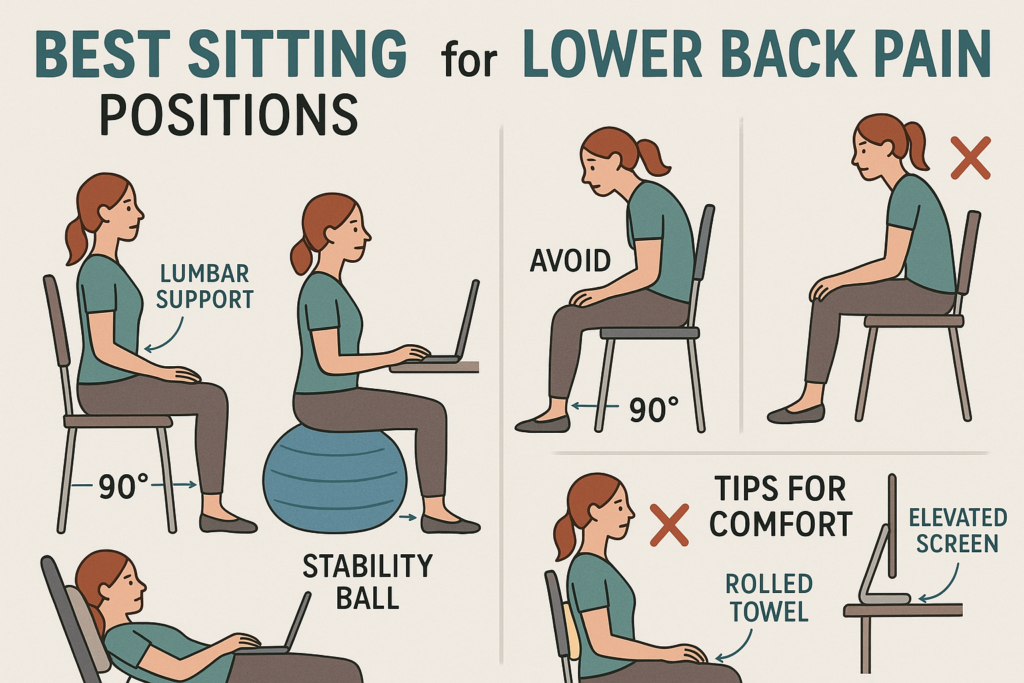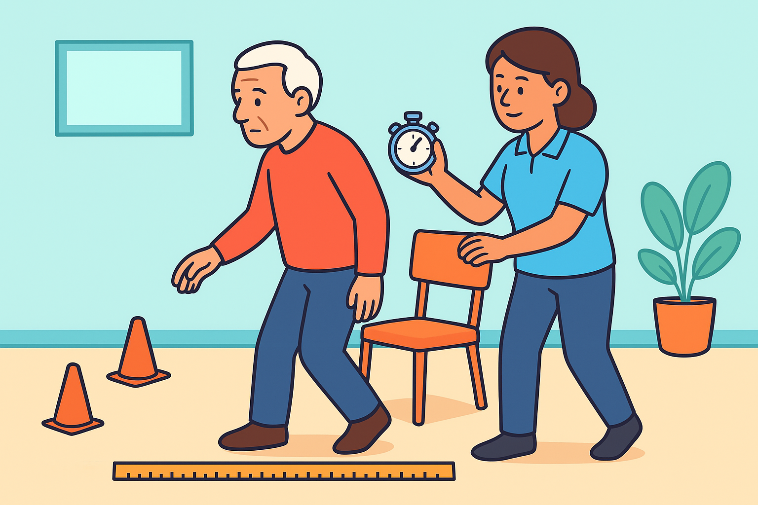Lower back pain is a common issue for people of all ages. It can be caused by poor posture, sitting too long, or even stress. Finding the best sitting posture and comfortable sitting positions for lower back pain is important for reducing discomfort and improving overall back health. In this article, we’ll explore the best ways to sit, what to avoid, and tips to help your back feel better.
Why Sitting Posture Matters
When you sit for a long time in the wrong position, it puts pressure on your lower back. Over time, this can lead to pain or make existing pain worse. Learning the correct sitting position for lower back pain can help reduce strain and improve your comfort during the day.
Sitting with a straight back, supported by a chair, and feet flat on the floor is key. Avoid slouching or leaning forward, especially when using a computer or phone. Good posture helps keep your spine in its natural shape and reduces stress on your muscles.
Best Sitting Posture for Lower Back Pain
So, what is the best position to sit with lower back pain? Experts recommend keeping your knees at a right angle, your back straight, and your shoulders relaxed. Your feet should be flat on the floor, and your hips should be slightly higher than your knees.
A chair with good lumbar support is ideal. If your chair doesn’t have it, try using a small cushion or rolled towel behind your lower back. This helps maintain the natural curve of your spine and offers pain relief throughout the day.
Good Sitting Positions for Lower Back Pain
Some of the best sitting positions for lower back pain include:
-
Straight-backed chair with lumbar support – Keeps your spine aligned.
-
Sitting with knees slightly apart – Reduces hip and back strain.
-
Reclined sitting with support – Leaning back at a slight angle can ease pressure.
-
Using a footrest – Helps elevate your feet and reduce leg tension.
-
Active sitting on a stability ball – Engages core muscles and improves posture.
These comfortable sitting positions for lower back pain can help reduce tension and support your spine better throughout the day.
Worst Sitting Positions for Lower Back Pain
Not all positions are good for your back. In fact, some are harmful. Here are the worst sitting positions for lower back pain:
-
Slouching or hunching over your desk
-
Crossing your legs for long periods
-
Sitting with no back support
-
Leaning to one side
-
Sitting on a soft couch with no lumbar support
These habits can make back pain worse over time. Fixing your posture now can prevent long-term problems.
Best Sitting Position for Lower Back Pain During Pregnancy
Pregnancy brings extra weight and pressure on the lower back. The best sitting position for lower back pain during pregnancy is sitting upright with your back straight and a small pillow placed behind your lower back.
Use a chair with armrests and keep your feet flat. Avoid crossing your legs. Taking breaks to stand up and walk around can also help ease pressure from your lower back and hips.
How to Make Sitting More Comfortable
If you’re wondering, How can I make my back less painful when I sit? there are a few easy things you can do:
-
Use an ergonomic chair
-
Take breaks every 30 minutes to stand or walk
-
Place a rolled towel behind your back for support
-
Adjust your screen to eye level to avoid leaning forward
-
Stretch your hips and back during breaks
These changes can improve your sitting posture for lower back pain and make long periods of sitting more manageable.
What Comfort Position for Lower Back Pain Helps Most?
Everyone’s body is different, but the most comfortable sitting positions for lower back pain often include sitting with lumbar support and keeping both feet flat on the ground.
Using a reclining chair or adjusting your chair angle slightly backward can also provide relief. Just be sure to avoid slumping or sinking into the seat, as this can strain your lower back even more.
Tips for the Best Sitting Position for Lower Back Pain Relief
To find the best sitting position for lower back pain relief, follow these tips:
-
Keep your hips slightly higher than your knees
-
Use a cushion if your chair is too hard
-
Sit on the edge of the seat with a straight back if needed
-
Try using a standing desk to reduce sitting time
-
Consider posture-correcting supports or braces if pain persists
These tips, combined with movement and stretching, offer a strong way to manage daily discomfort.
What Is the Fastest Way to Cure Lower Back Pain?
Many people ask, What is the fastest way to cure lower back pain? While there’s no instant fix, certain steps can bring quick relief:
-
Improve your sitting position right away
-
Do light stretching and strengthening exercises
-
Apply a cold or warm compress
-
Take short walks to loosen tight muscles
-
See a physical therapist for tailored advice
Fixing your sitting position for low back pain is a great first step in this process.
You can also learn how to get rid of back pain from sleeping wrong to improve your posture even while you rest.
Summary Your Daily Guide to Sitting Right
Back pain doesn’t have to control your day. By focusing on the best sitting posture and comfortable sitting positions for lower back pain, you can reduce pressure on your spine and enjoy better comfort.
Here’s a quick checklist to remember:
Sit with your back straight and feet flat
Avoid slouching or leaning forward
Use support behind your lower back
Take movement breaks often
Avoid soft, unsupportive seating
Making these small adjustments can have a big impact. Whether you’re working at a desk, relaxing at home, or pregnant and needing extra support, there’s a good sitting position for lower back pain that can help you feel better today.




